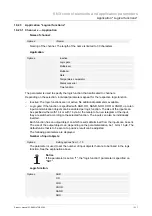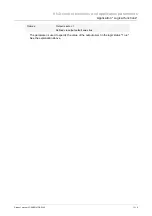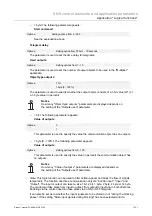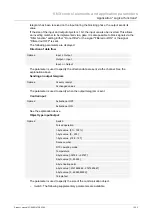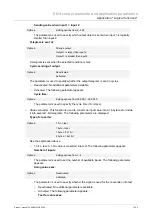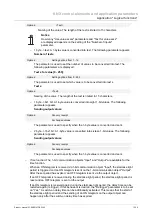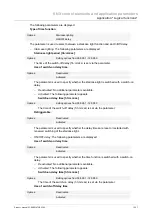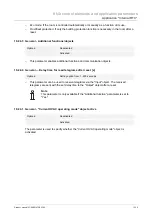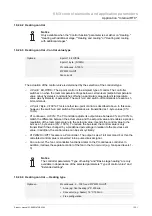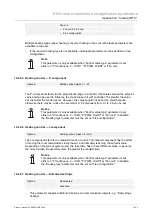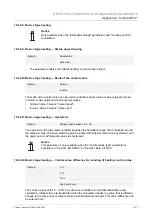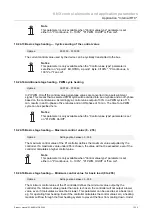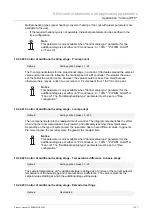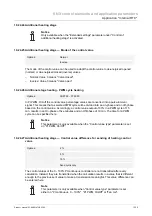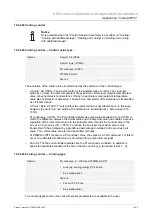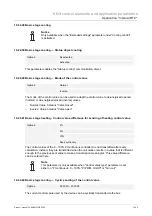
KNX control elements and application parameters
Application "Internal RTC"
Product manual 2CKA001473B5342
│
229
10.24 Application
"Internal
RTC"
10.24.1 General - Control function
Options:
Heat
Heating with additional stage
Cool
Cooling with additional stage
Heating and cooling
Heating and cooling with additional stage
–
Heating
: For operating a heat-based single-room control. The temperature is regulated to
the setpoint value defined in the parameter. The "Controller type" and "Heating type" can be
programmed for optimal control.
–
Heating with additional stage
: In addition to the control function described under heating, the
additional stage enables the activation of an additional heating circuit. This type of additional
stage is used, for example, to quickly heat up a bathroom with floor heating via a heated
towel rack.
–
Cooling
: For operating a cooling-based single-room control. The temperature is regulated to
the setpoint value defined in the parameter. The "Controller type" and "Cooling type" can be
programmed for optimal control.
–
Cooling with additional stage
: In addition to the control function described under cooling, the
additional stage enables the activation of an additional cooling device. This type of
additional stage is used, for example, to quickly cool a room via an added cooling device.
–
Heating and cooling
: For operating a two-wire or four-wire system used to heat or cool a
room. Switching between heating and cooling takes place using a central switch (two-wire
system) or is carried out manually and / or automatically via the single room temperature
controller (four-wire system).
–
Heating and cooling
with an additional stage: In addition to the heating and cooling
functions, one additional stage each with an autonomous controller type can be
programmed.
10.24.2 General - Operating mode after reset
Options:
Comfort
Standby
Eco mode
Frost/heat protection
After a reset the device will run in the operating mode after a restart until a new operating mode
is set as the result of device operation or by communication objects, as the case may be. This
operating mode should be defined during the planning phase. An improperly defined operating
mode can result in a loss of comfort or increased energy consumption.
–
Comfort
: If the room temperature is not automatically lowered and the room is therefore
controlled independent of its use.
–
Standby
: If the room is controlled automatically, e.g. by a presence detector, as a function of
its use.



